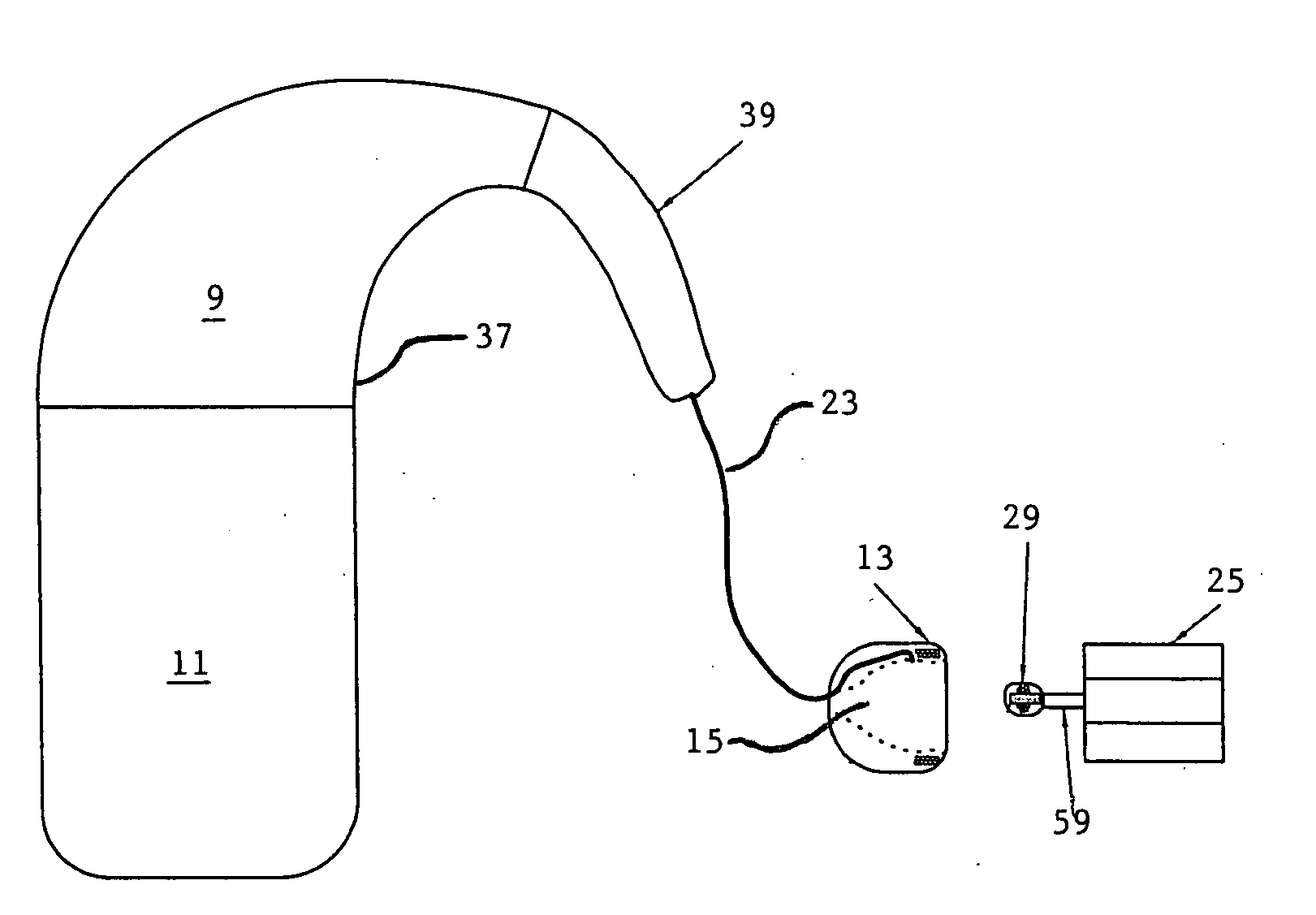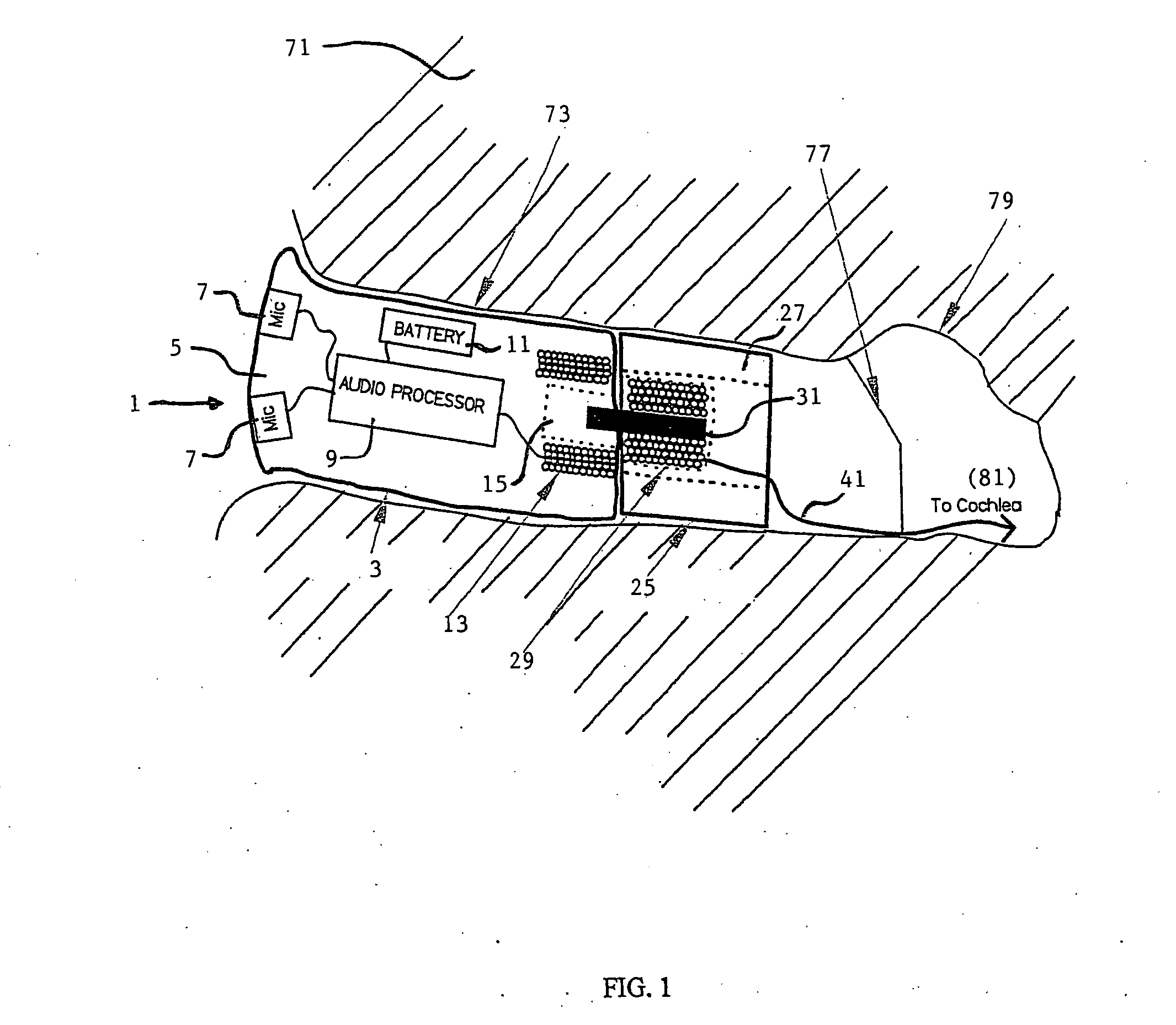Cochlear ear implant
a cochlear implant and ear technology, applied in the field of transcanal and transtympanic cochlear implant devices, can solve the problems of profound hearing loss, inability to generate electrical energy and transmit to the brain, and inability to use a hearing aid to process sound
- Summary
- Abstract
- Description
- Claims
- Application Information
AI Technical Summary
Benefits of technology
Problems solved by technology
Method used
Image
Examples
Embodiment Construction
[0049] While the present invention is susceptible to the embodiment in various forms, as shown in the drawings, hereinafter will be described the presently preferred embodiments of the invention with the understanding that the present disclosure is to be considered as a exemplification of the invention and is not intended to limit the invention to the specific embodiments illustrated.
[0050] With reference to the figures, the cochlear ear implant 1 of the present invention includes three primary components, namely an exterior ear module 3, an interior ear module 25 and an electrode assembly 41. The exterior module may be constructed in various forms depending on the construction of the patient's ear. For example, for the preferred embodiment of the cochlear ear implant shown in FIG. 1, the exterior ear module 3 is located in the exterior region of the auditory canal 73. The exterior ear module is made in the same manner as a conventional in-the-ear hearing aid. First, an impression ...
PUM
 Login to View More
Login to View More Abstract
Description
Claims
Application Information
 Login to View More
Login to View More - R&D
- Intellectual Property
- Life Sciences
- Materials
- Tech Scout
- Unparalleled Data Quality
- Higher Quality Content
- 60% Fewer Hallucinations
Browse by: Latest US Patents, China's latest patents, Technical Efficacy Thesaurus, Application Domain, Technology Topic, Popular Technical Reports.
© 2025 PatSnap. All rights reserved.Legal|Privacy policy|Modern Slavery Act Transparency Statement|Sitemap|About US| Contact US: help@patsnap.com



